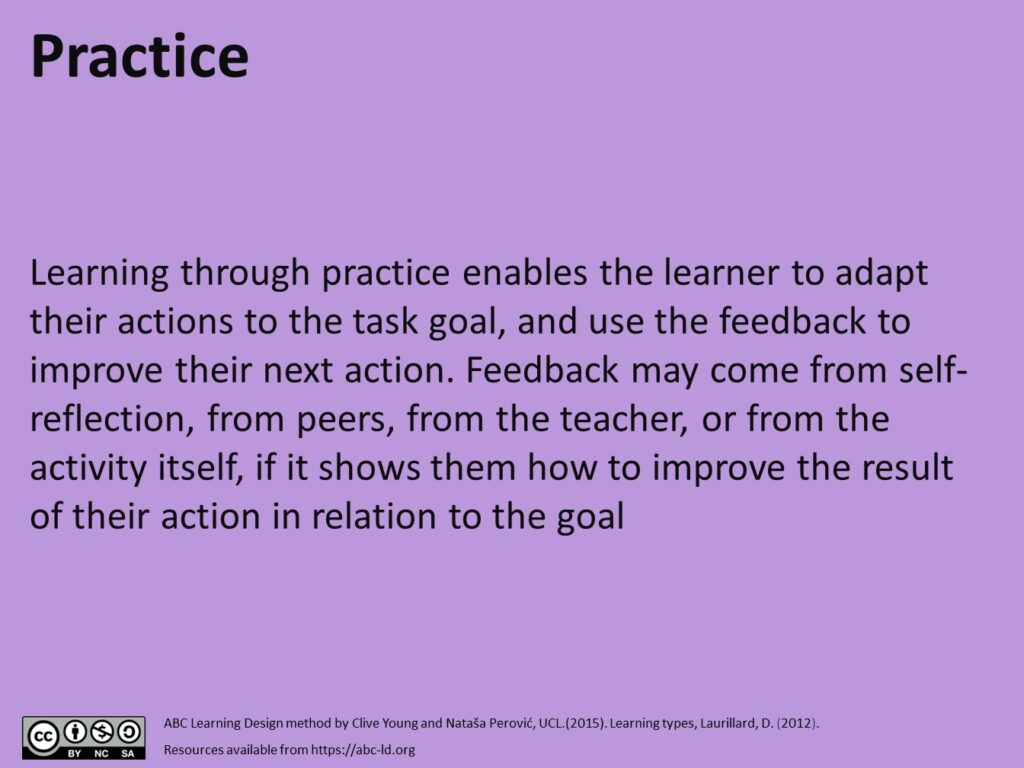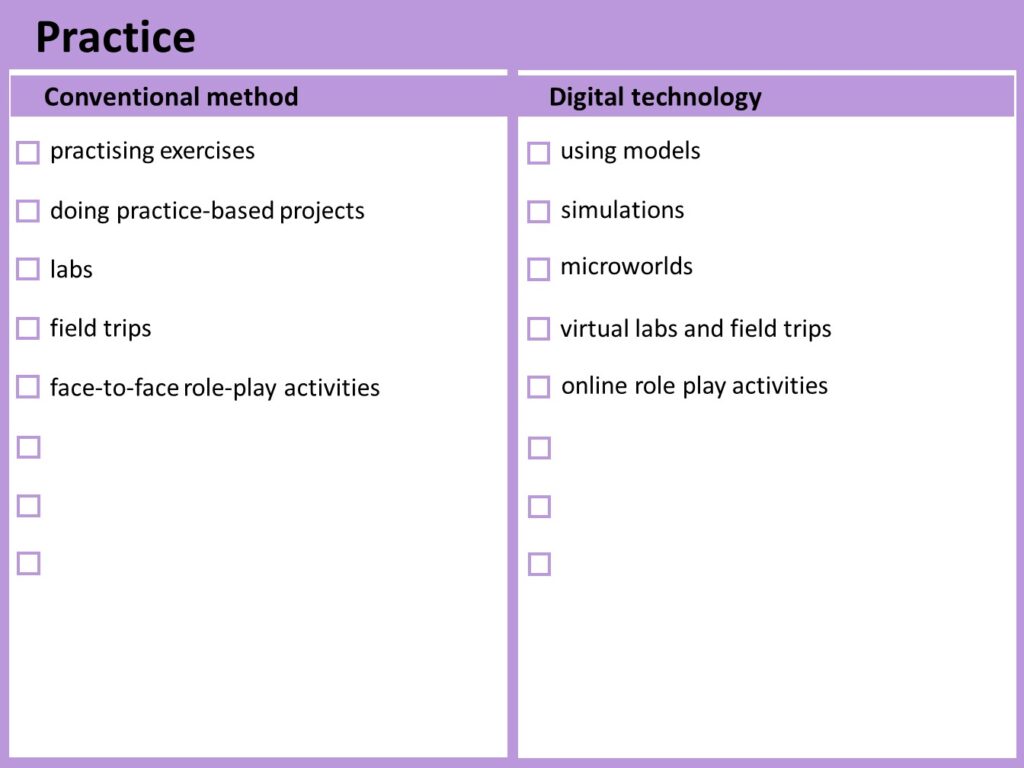A module plan in only 90 minutes? ABC Learning Design provides teaching teams with structures, methods and materials so that they can plan modules together constructively and in a short space of time.
Developing curricula is a challenging task: lecturers have to formulate their learning outcomes and agree on them with everyone involved. They also have to choose suitable didactic methods for initiating learning processes and plan suitable examination methods. To make these processes easier and to design them constructively, Nataša Perović and Clive Young at University College London (UCL) developed the ABC Learning Design method.
A stands for Arena (the name of the UCL Center for teaching and learning)
B is for Blended learning: creating a connection between in-person and online teaching in a way that makes sense is considered from the start.
C für Collaborative 1 : is for Collaborative: the focus of the methodology is on all lecturers involved dealing with the content and methodical design of modules in depth.
The core idea is for all lecturers involved in a module to sit at a table together for 90 minutes to plan it. Together, they agree on the learning outcomes of a module and plan constructive learning activities, with suitable exam formats being considered as well right from the start. The results are visualised immediately after each step.
Module plan in 6 steps
One of the core success factors of the method is a sequence of individual steps that is planned in advance according to a set schedule.
Step 1: “Tweet your module”
The lecturers discuss what is the quintessence, the core learning outcome of their module in five minutes. They subsequently summarise the core outcome of the module in Twitter format (maximum of 280 characters) and set it down in writing.
Step 2: Outline learning activities
In the next step, the individual teams outline the learning activities that are especially important for achieving the learning outcome (or outcomes). Laudrillard’s concept (2012) forms the theoretical framework. She distinguishes between six different basic activities: acquisition, collaboration, discussion, investigation, practice and production.
Even if there is not always a clear distinction between the individual categories, they provide a helpful framework for planning different learning activities. In a pre-specified radar chart (see Figure 1), the teaching teams visualise the extent to which the individual learning activities are significant for achieving the learning outcomes.
Step 3: Deciding on the learning format
What percentage of the module should take place online? How many face-to-face sessions are planned? A first assessment is visualised as a chart here too. Figure 1 shows an example of what a visualisation of steps 1–3 could look like.

(https://abc-ld.org/download-abc/)
Step 4: Planning learning experiences
After the initial rough outline has been drawn, different learning activities are planned. Activity cards are an essential aid here. There is a brief description of the primary learning activities on the front (see Figure 2), with examples of suggestions for how these activities can specifically be put into practice on the back (see Figure 3).
On a template in DIN A1 format, the storyboard, the individual activities are ordered into a rough time sequence along the planned learning process of the students.
Step 5: Decide on formative and summative assessments
The lecturers put stickers on the completed storyboard to mark the activities where the students will receive formative feedback and those where the feedback will be summative.
Step 6: Draw up a plan of action
At the end of the session, everyone involved draws up a plan of action that sets a time schedule with the further steps required.
Communication and cooperation as core success factors
The following video provides a good insight into how a completed storyboard emerges for a curriculum through the intensive communication between those involved in the module.
The use of the ABC Learning Design has already proved its worth at numerous European universities when it comes to revising and redesigning modules. Not only that, but it is at least as suitable when in-person or online modules are to be converted into a mixed format (blended learning).
Clive Young and Nataša Perović have put together the required materials in english (and many other languages) for anyone who would like to try this methodology out.
Teaching teams at the University of Regensburg are also very welcome to ask for help with presenting an ABC workshop from the Centre for University and Academic Teaching (ZHW).
References
Laudrillard, D. (2012). Teaching as a Design Science: Building Pedagogical Patterns for Learning and Technology. Routledge.
Young, C. and Perović, N. (2016). Rapid and Creative Course Design: As Easy as ABC? Procedia – Social and Behavioral Sciences, 228, 390-395.
Young, C. and Perović, N. (2020). ABC LD – A new toolkit for rapid learning design. European Distance Education Network (EDEN) Conference 2020, Timisoara, Romania.
Suggestion for citation of this blog post: Hawelka, B. (2021, September 23). Curriculum development – As easy as ABC. Lehrblick – ZHW Uni Regensburg. https://doi.org/10.5283/ZHW.20210923.EN
Our authors introduce themselves:



































































No Comments